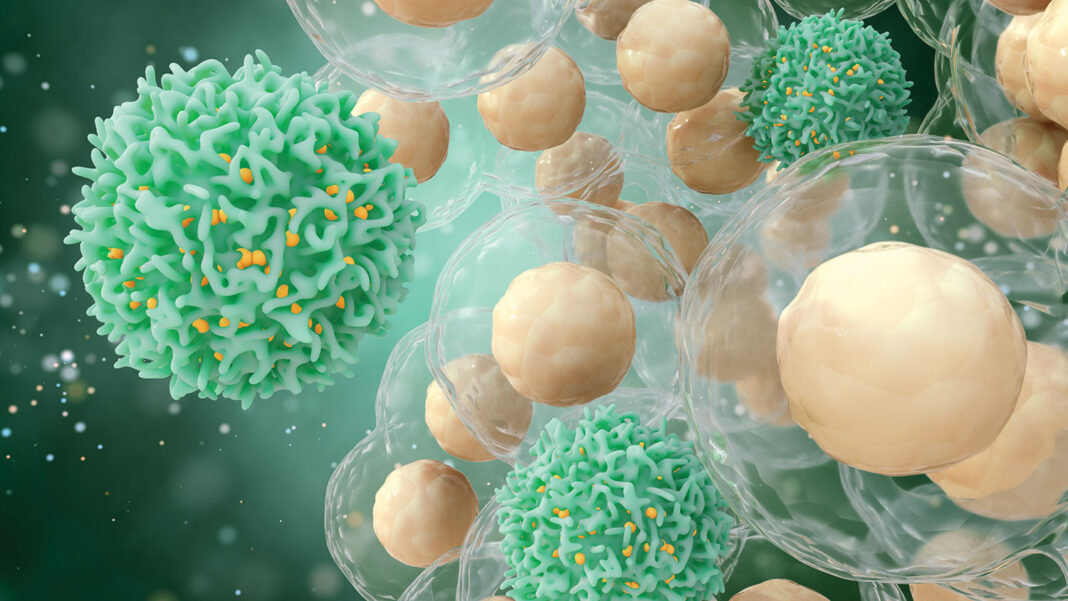Sponsored content brought to you by
Detecting protein biomarkers early is key for cancer prognosis and disease prevention. Recent advancements in proteomics have helped scientists to better study and understand changes in proteins, including post-translational modifications, such as phosphorylation. By understanding and identifying changes in proteins, important cellular pathways can be discovered, which, in turn, helps alleviate some of the challenges in the search for cancer biomarkers.1
However, many of the traditional methods used to measure protein activity are only able to detect a limited number of proteins at one time and tend to be labor intensive, requiring large amounts of sample. The protein samples may be denatured or separated by charge in these methods, thus destroying information about the target proteins. In addition, they might not provide the sensitivity and robustness required, as these techniques typically provide bulk cell analysis and measure average protein levels within the sample. For scientists to better identify the right biomarkers and targets, and understand the full pathway map, they need to be able to study and measure protein activity at the single-cell level.1
IsoPlexis’ Single-Cell Intracellular Proteome application provides intracellular signaling proteomics on one integrated platform, enabling researchers to uncover insights that could lead to better combination therapies to combat drug-resistant cell states. This technology allows users to analyze signaling cascades of many phosphoproteins directly from a single cell, across thousands of cells in parallel. In a study published in Nature Communications, “Multi-omic single-cell snapshots reveal multiple independent trajectories to drug tolerance in a melanoma cell line,” Su et al. used a well-characterized melanoma cell line that is known to rapidly develop drug resistance, and employed multiple impactful analyses to reveal changes in functional phenotype over time in individual cells. Using IsoPlexis’ Single-Cell Intracellular Proteome technology, this group was able to define multiple independent paths that tumor cells take in the development of drug resistance.2
The mutant melanoma cancer cells (BRAFV600E M397) were treated with BRAF inhibitor (BRAFi) each day for five days and analyzed with IsoPlexis’ technology each day. The group used a panel consisting of phenotypic markers and markers of oncogenic signaling, cell proliferation, and metabolic activity, which are all transformed in the preliminary drug response. On day 1, most metabolic regulators and phosphoprotein signals were blocked, indicating that the BRAFi treatment was working. However, on day 3, many markers showed a sharp and temporary rise in variance, indicating multiple cell state changes at this point in time. By day 5, most cells had gone into a senescent state, with some cells moving toward a mesenchymal phenotype.2
The existence of multiple pathways to drug resistance makes targeting that resistance mechanism even more complex. However, the researchers were able to identify drug susceptibilities for both pathways. IsoPlexis’ platform revealed insights that led to the correct prediction of the combination therapy that would effectively combat both pathways to resistance. With IsoPlexis’ unique multi-omic platform, researchers can gain new insights to help in the development of effective combination therapies, and identify highly functional cell subsets which are predictive of patient outcome in complex cancers and beyond.
To learn more about the Nature Communications study, read the research paper summary.
References
1. The Scientist Creative Services Team in collaboration with IsoPlexis. Advancing Cancer Biomarker Detection with Single Cell Proteomics. The Scientist Magazine.
2. Su Y, et al. Multi-omic single-cell snapshots reveal multiple independent trajectories to drug tolerance in a melanoma cell line. Nature Communications 202011: 2345.


